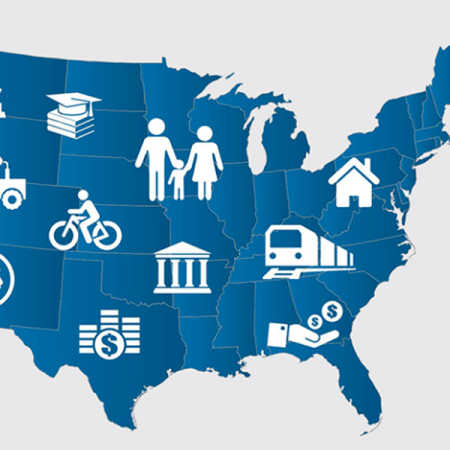Current Economic Crisis, Causes and Cures (Contd.)
By Dr. A. S. Nakadar, TMO Publisher and CEO
The Stimulus Package
Tell me honestly, would you have been happy to see a stimulus package of $786 billion rather than $787 billion?
Since the approval of this stimulus package by both houses, we have heard endlessly from all the sides of the political aisle, from people of different hues and so called experts discussing its advantages and disadvantages. Republicans oppose it and Democrats favor it.
The plan provides for increased government spending. More funding for unemployment benefits, increases food assistance and increases health insurance for the poor. It also calls for higher taxes on people who earn more than $250,000/year. The package includes construction and repair of high ways and bridges. Reduction in homeowner’s mortgage payments to prevent foreclosures. Schools and children’s education funding have received a priority in the stimulus packages. Huge amounts will be spent on development of alternate energy sources, and so forth.
The Senate package also includes two costly but popular tax breaks not in the House bill, an $11.5 billion measure that would encourage the purchase of autos by allowing buyers a write-off for local sales taxes and interest on loans and a $35.5 billion measure creating new tax credits that would equal 10% of a primary-home purchase, up to $15,000.
The prevention of a prolonged recession–or even a depression–required the injection of huge amounts of money into the system. Inaction would have been the worst course of action.
The recession would have continued to spiral without an end in sight. Republicans suggested that cutting taxes would have been better. The situation is different. The people who paid the bulk of the taxes are either unemployed, or working on a lowered salary, or their assets have dwindled. There is nothing to gain by reducing capital gain taxes further, when there are very little gains but more losses. How many rich people pay taxes anyway? They have enough legal loopholes so as to avoid paying taxes.
Some argue that without the stimulus package the economy and the dollar would self-adjust and emerge strong; in all probability no action would wreck the economy further, with internal turmoil and havoc. It is anyone’s guess how long the economy would take to correct itself. Moreover, during this period of inaction, it could put the global economies at risk. And hence it could usher in an unbearable shift in world power.
The stimulus package will result in direct payments to individuals, through unemployment compensation or tax credits, and through purchases of goods and services by the Federal government or indirectly in the form of grants to states and local governments.
The stimulus package will take time to work its way through. Its effect may become visible by the end of this year or early next year. It is likely to create jobs, roads, bridges and other services, stabilize the housing price slide, and tax incentives may help reduce mortgage foreclosures by lowering mortgage payments and restructuring the loans and by easing the credit crunch by injecting money into the banks.
The primary movers of the economy are the banks, the housing industry, and the auto industry.
The bank, through its lending activities, keeps the economy moving. The “toxic†mortgages choked off its prime lending activity. It bought the economy to a standstill. To keep it functioning, the Bush administration approved $700 billion under TARP (the “Troubled Asset Relief Programâ€), and this year the Obama administration asked for a $750 billion infusion into the banking system. Last year European governments put $2.3 trillion on the line in guarantees and other emergency measures to save their banking system.
Bailing out the banks, and bringing back confidence in the banking system, required infusions of huge amounts of capital. Hank Paulson, the former treasury secretary, initially started to buy banks (nationalization) but soon learn its enormous problem and advised to give money to the bank with relative bank ownership (short of nationalization).
The other most important factor in moving the economy is the housing market. A house, especially a new house, supports number of industries by providing demand for lumber, electrical services, plumbing services, carpeting services, household appliances and so forth; it also supports your district schools and other city services through city taxes, thus the collapse of the housing market is considered a most significant risk to the economy. Once the housing market starts moving, it will impact the total economy.
Similarly, the auto industry provides employment to hundreds of thousands of people through its manufacturing plants, and supports hundreds of other smaller industries that manufacture its various components.
Keeping the above factors in mind–how one can protect his asset or what is in store for the future?
An infusion of money will effectively devalue the dollar. Prices of all commodities, utilities and goods and services will start rising after a year or so, especially after the dust settles.
During the period of recession, cash will be king. So remain liquid. Be prudent in your purchases. If you are in a stock market, a certain portion of your portfolio must be in a Bear fund or hedged funds (20-30% or more depending upon your strategy). Keep 20-30% in cash. Divide the rest of the money between domestic shares and the overseas market.
TMO columnist Bob Wood, who predicted this bear market and mess before anyone else did, thinks it is headed lower, maybe below the 5000 level or so.
Here is what he says, “An interesting item in Barron yesterday showed that the Dow has lost half of what it gained since the Depression. I can go that one better. The Dow has lost one half of its gains since 1900! The Dow began the last century at 66. It peaked in October of 2007 at about 14,300. It is now at under 7,100. What that means to us is that it took 107 years for the Dow to rise to over 14,000, and 16 months to give half of those gains away!†According to him, the PE ratio is still very high, about 25, and has to fall about 10 or lower, before the stock market will show life.
 The housing market: There is surplus inventory of 13 months supply. This provides an excellent buy opportunity, especially for those who are looking for a house to live. Not only are the prices at bargain levels, but the mortgage financing is low and the tax incentives are great. The time for real estate investment, land, apartments, shopping centers, etc; is good too, but you must have a holding capacity of at least 3-4 years without any significant income coming from that property.
The housing market: There is surplus inventory of 13 months supply. This provides an excellent buy opportunity, especially for those who are looking for a house to live. Not only are the prices at bargain levels, but the mortgage financing is low and the tax incentives are great. The time for real estate investment, land, apartments, shopping centers, etc; is good too, but you must have a holding capacity of at least 3-4 years without any significant income coming from that property.
Gold, silver, and other commodities: Gold prices and the U.S. Dollar are inversely proportional. If the value of the dollar goes down, gold prices will go up. Gold will soar higher because it is and has always been the world’s hard currency. The current price of gold is around $900-$930/oz. It may rise to $1500 in the near term, and may reach $2000 in the long term. Every portfolio must have at least 5-10% in gold, either in shares or in actual bullion, as an insurance against any monetary catastrophe.
Taxes: Individual taxes and capital gains tax will ultimately go up after 2010. The astronomical trillion dollar deficits have to be financed. This is important in future tax planning, especially for tax shelters.
No matter what you do, you must have an investment strategy based on your age and income. If you develop a sound strategy, you will be prepared for the eventualities.
This is the last article from a series.













2009
843 views
views
0
comments